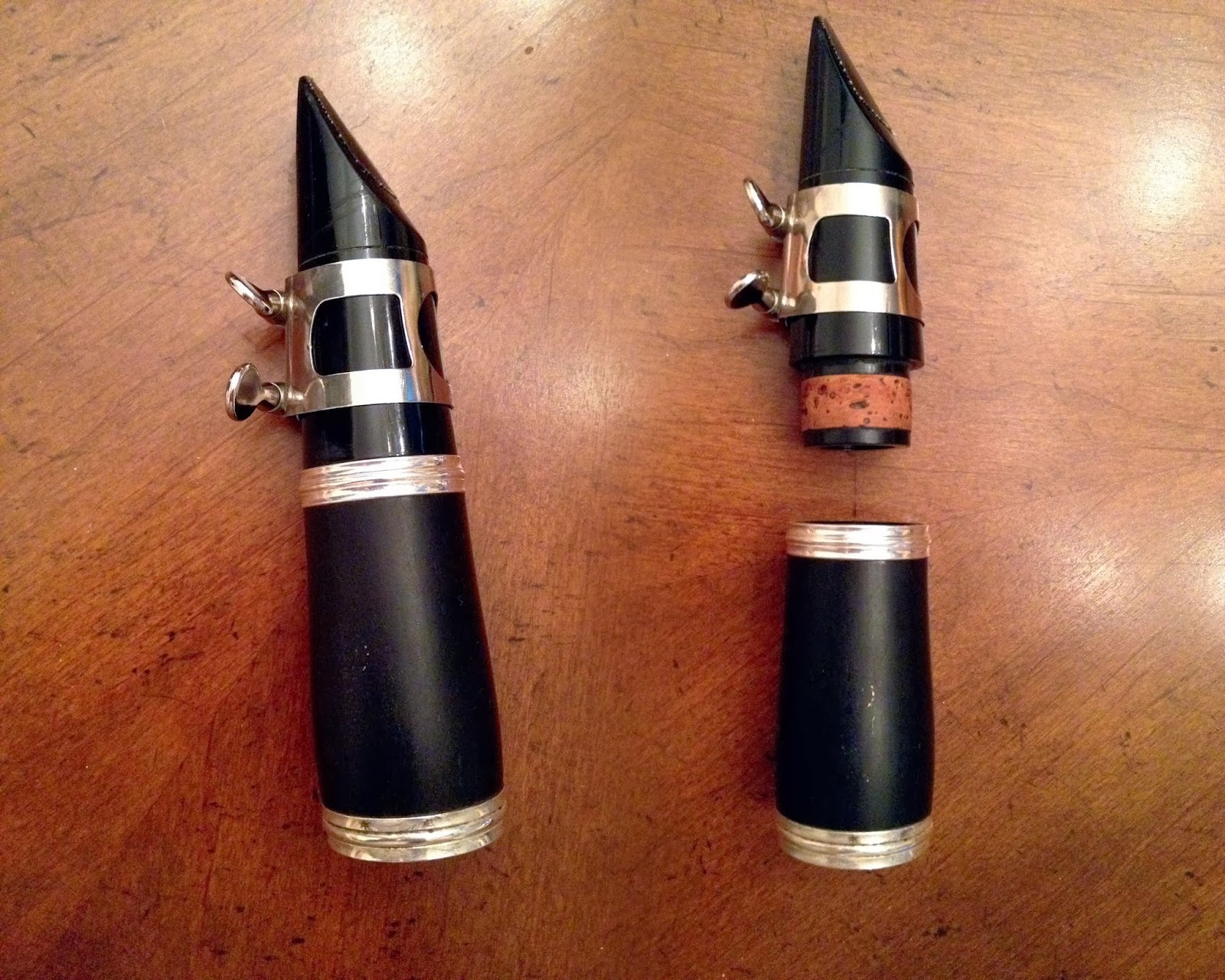Posture
 |
| Saxophone posture |
Saxophone posture can vary depending on the musician. Like other instrumentalists, saxophone players should sit up straight with their feet flat on the floor, but they can choose how to hold the instrument while they're playing it. Younger players can learn to hold the saxophone so it's outside their legs. (This is how most of our saxophone section plays.) I'm assuming this is because they aren't big enough to hold the instrument between their legs. I play with the saxophone rested between my legs on the chair - I'm just tall enough for it to work out. It means I don't have to have the weight of the saxophone on my neck, which is nice. I'm not sure if this is encouraged for elementary school students; that's something to figure out in April.
 |
| Saxophone embouchure |
Embouchure
The saxophone mouthpiece was based on the bass clarinet's, so the embouchure is similar. The mouthpiece goes straight into the mouth, unlike clarinet mouthpieces which are at an angle. The bottom lip can be curled under slightly, and the top teeth should apply some pressure. The chin is flat and pointed. The higher notes require tighter embouchure and control so they will speak and be in tune. The mouth and throat need to be open in order to play the lower notes, as if a golf ball is in your throat. Dropping your jaw helps open up the embouchure.
Tuning
 |
| Saxophone mouthpiece |
To me, the saxophone is notorious for being out of tune. Fortunately, it can be easier to fix than on other instruments. The mouthpiece of a saxophone is very different than other woodwind mouthpieces. A clarinet or a flute is played with the mouthpiece pushed in all the way; there is no cork showing. There is a definite "starting point" for tuning. There isn't a clear "starting point" for saxophone. The mouthpiece is placed on a piece of cork
(it can safely rest on about 2 inches of it), so there's a lot of wiggle room. You remember where to put the mouthpiece once you have some experience. In the meantime, it's a good idea to tune before you play to ensure the mouthpiece is in the right place. (My rented saxophone also has a red line drawn where the mouthpiece should be placed.)
Dynamics
 |
| Clarinet mouthpiece |
Saxophones are also known for being able to overpower other instruments. (I remember the saxophonists had to put socks in their bells to muffle the sound.) They have to be able to fit in with all types of ensembles, so dynamic control is very important. Some ranges (ie. the higher notes) are easier to play quietly than others (the lower notes), so you have to adjust your air support accordingly. The lower notes require more support if they're going to be played quietly.




No comments:
Post a Comment